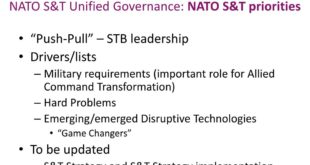Revolutionizing Computing with In-Memory Photonic Processors A new era of light-speed computing promises to transform AI, communications, defense, and sustainability. The rapid expansion of artificial intelligence (AI), the Internet of Things (IoT), and 5G/6G mobile networks is generating an unprecedented explosion of data. This escalation demands computing architectures that are …
Read More »TimeLine Layout
August, 2025
-
13 August
Electronic Packaging Technology: Innovations, Challenges, and Future Directions
How cutting-edge packaging materials and processes are transforming electronics in both civilian and military applications. Introduction Electronic packaging technology is the art and science of designing and producing enclosures for electronic devices, ranging from individual semiconductor chips to complete systems like mainframe computers. This discipline plays a crucial role in …
Read More » -
12 August
Exploring the Future with Humanoid Robots: A Journey into Artificial Intelligence
Humanoid Robots: The AI-Powered Machines Shaping the Future of Work, Safety, and Everyday Life Introduction: Humanoid robots have been a staple of science fiction for decades, captivating our imagination with visions of intelligent machines walking among us. These fascinating machines, designed to resemble and mimic human behavior, have captured the …
Read More » -
11 August
Personalizing Healthcare with AI-Driven Facial Emotion Recognition
Personalizing Healthcare with AI-Driven Facial Emotion Recognition How AI is helping doctors read emotions in real time for more compassionate, personalized care. The integration of artificial intelligence (AI) into healthcare is revolutionizing the industry, particularly in areas that require deeper human interaction and understanding. One of the most promising advancements …
Read More » -
11 August
U.S. Cyber Command’s Constellation Pilot Program: Revolutionizing Defense Innovation Through Agile Collaboration
In an era where rapid technological advancement defines military superiority, the U.S. Cyber Command’s Constellation Pilot Program is emerging as a groundbreaking model for accelerating defense innovation. Designed to bridge the gap between cutting-edge research and operational deployment, Constellation is not just a series of projects—it’s a blueprint for transforming …
Read More » -
11 August
BAAM (Big Area Additive Manufacturing): Transforming Large-Scale Production and Military Applications
Big Area Additive Manufacturing (BAAM): The Giant Leap in Civilian and Military Production From shipyards to battlefields, BAAM is redefining large-scale manufacturing with unprecedented speed, flexibility, and cost savings. Introduction Additive manufacturing (AM) has revolutionized the way industries produce components, offering unparalleled design flexibility, reduced material waste, and faster production …
Read More » -
11 August
Software Defined Radio (SDR): Technology, Applications, and Future Trends in Commercial and Military Sectors
Software Defined Radio (SDR) – A Game-Changer for Military and Commercial Communications Discover how SDR’s software-driven flexibility is transforming communications across defense, space, telecom, and public safety — and why it’s the future of wireless connectivity. Introduction In today’s hyper-connected world, communication systems are evolving at an unprecedented pace. Software …
Read More » -
11 August
Military Plans for Electric & Hybrid Land Vehicles: Enhancing Stealth, Efficiency, and Sustainability
Military Electrification: The Silent Revolution in Combat Vehicles One-Liner: How electric and hybrid military vehicles are redefining stealth, efficiency, and battlefield power. The modern battlefield is evolving, and so is military technology. As armed forces worldwide seek to enhance mobility, reduce logistical burdens, and improve sustainability, electric and hybrid land …
Read More » -
10 August
The Future of UAV Propulsion Systems: Advances, Challenges, and Innovations
The Future of UAV Propulsion: From Solar Flyers to Supersonic Swarms Breakthrough propulsion systems are setting the stage for faster, cleaner, and smarter drones. Introduction Unmanned Aerial Vehicles (UAVs) have transformed military, commercial, and scientific domains, with their propulsion systems being a key factor in determining endurance, efficiency, and mission …
Read More » -
10 August
NATO’s Technological Thrust: AI, Data, Space, Hypersonics, and Quantum for Future Military Operations
As an alliance dedicated to fostering peace, security, and stability across the Euro-Atlantic region, NATO stands at the forefront of defense and security collaboration. However, the current security landscape presents a myriad of challenges, ranging from state and non-state actors to cyber threats, terrorism, and hybrid warfare. To navigate this …
Read More »
 International Defense Security & Technology Your trusted Source for News, Research and Analysis
International Defense Security & Technology Your trusted Source for News, Research and Analysis








